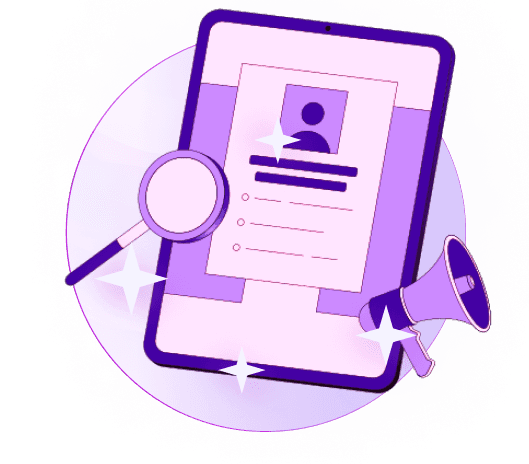Blogs
Articles

Comparing AI and Automation: How They Work Together to Boost Sales Productivity
The dynamic duo of. Artificial Intelligence (AI) And. Automation Has emerged as a powerful force in driving sales productivity to new heights. While often used interchangeably, AI and Automation play distinct yet complementary roles in streamlining processes and enhancing efficiency across sales operations.
AI, with its ability to analyze vast amounts of data and make predictions, empowers sales teams with valuable insights for targeting the right leads and personalizing customer interactions. On the other hand,.
This discussion delves into the intricate relationship between AI and Automation, showcasing how their collaboration revolutionizes sales strategies and propels businesses towards sustainable growth in the digital era.
Understanding AI and Automation
Artificial Intelligence (AI) and automation have revolutionized the sales industry, offering innovative solutions to enhance processes and customer interactions. Companies across various sectors are capitalizing on these technologies to streamline sales operations and drive revenue growth. Automation plays a crucial role in identifying potential clients, simplifying sales procedures, enhancing customer experiences, and ultimately boosting sales revenue.
On the other hand, AI empowers sales teams with valuable insights, enabling personalized customer engagement, refining lead qualification and scoring mechanisms, and supporting accurate forecasting and pipeline management. The utilization of AI in sales operations yields multiple benefits, including heightened accuracy, superior customer experiences, and augmented revenue generation. Organizations are harnessing the power of AI and automation to refine their sales strategies, amplify operational efficiency, and foster meaningful customer relationships.
The integration of AI and automation has become imperative for businesses aiming to stay ahead. One significant advantage of AI in sales is its ability to analyze vast amounts of data swiftly and accurately. This data analysis allows companies to identify trends, predict customer behavior, and tailor their sales strategies accordingly. By understanding customer preferences and behaviors through AI-driven insights, sales teams can personalize their approach, leading to higher conversion rates and customer satisfaction.
Moreover, AI-powered chatbots and virtual assistants are reshaping customer interactions in the sales domain. These intelligent tools are available round the clock to assist customers, provide product information, and even guide them through the sales process. By offering instant responses and personalized recommendations, AI-driven chatbots enhance customer engagement and satisfaction, ultimately driving sales growth.
AI vs Automation: Differences
In the realm of technology, two terms that often get intertwined are Artificial Intelligence (AI) and Automation. While they both play a crucial role in driving efficiency and innovation, it is essential to understand the distinctions between the two. Let's delve deeper into the disparities between AI and Automation.
Functionality and Applications in Sales
AI in Sales: Revolutionizing Customer Insights and Personalization AI in sales goes beyond basic automation by harnessing the power of data to provide deep customer insights. Through advanced analytics, AI can predict customer behavior with remarkable accuracy, enabling businesses to tailor their interactions and offerings in a highly personalized manner. Moreover, AI-driven sales tools can streamline decision-making processes by presenting actionable recommendations based on complex data analysis.
Automation in Sales: Streamlining Operational Processes Automation in sales primarily focuses on streamlining operational tasks to enhance efficiency. From automated email marketing campaigns to lead scoring algorithms, automation tools excel in executing repetitive tasks with speed and consistency. By automating routine processes, sales teams can free up time to concentrate on high-value activities such as building relationships with clients and devising strategic sales plans.
Human Intervention Levels
AI: Advancing Towards Autonomous Decision-Making AI operates on a more autonomous level compared to automation. With the ability to learn from vast datasets and adapt to dynamic environments, AI systems can make complex decisions independently. This autonomy reduces the reliance on constant human intervention, allowing AI to handle intricate tasks with a high degree of accuracy and efficiency.
Automation: Enabling Efficient Task Execution Automation, while effective in task execution, typically requires predefined instructions and human oversight. Human intervention is crucial to monitor and ensure the smooth functioning of automated processes. In scenarios where exceptions or anomalies arise, human intervention becomes essential to troubleshoot issues and make necessary adjustments to the automation protocols.
Scalability and Adaptability Comparisons
AI: Dynamic Scalability and Continuous Learning One of the key strengths of AI lies in its dynamic scalability and continuous learning capabilities. AI systems can adapt and improve over time by analyzing new data and refining their algorithms. This adaptability allows AI to handle complex and evolving tasks, making it an invaluable asset for organizations seeking scalable solutions that can evolve with changing market dynamics.
Automation: Static Efficiency and Limited Adaptability Automation, while efficient in repetitive tasks, may face limitations in adapting to unforeseen circumstances. Scaling automation often involves adjusting existing processes rather than inherently learning from new data. Despite its static nature, automation remains a critical component in enhancing operational efficiency and reducing manual workload in various business functions.
While AI and automation share the common goal of enhancing operational efficiency, their approaches and capabilities differ significantly. Understanding these differences is vital for organizations aiming to leverage technology effectively in their operations. By strategically combining AI's cognitive abilities with automation's operational prowess, businesses can unlock new possibilities for growth and innovation in an increasingly digital landscape.
Synergy for Sales Productivity
The synergy between various elements plays a pivotal role in enhancing sales productivity and driving sustainable growth. Let's delve deeper into the strategies and practices that can revolutionize sales effectiveness and elevate business performance to unprecedented levels.
Complementary Roles Enhancing Sales
Strategic Collaboration Between Sales and Marketing Teams: Exploring how alignment and joint efforts between these departments can amplify results and drive revenue growth.
Customer Service Excellence for Long-Term Success: Understanding the significance of exceptional customer service in building lasting relationships and securing repeat business.
Leveraging Cross-Functional Teamwork: Unleashing the power of diverse skill sets within the organization to capitalize on sales opportunities and drive business success.
Improving Customer Engagement
Personalization Strategies for Enhanced Customer Relationships: Tailoring interactions and communication to meet individual preferences and foster loyalty.
Data-Driven Customer Engagement: Harnessing the insights derived from data analytics to anticipate customer needs, personalize offerings, and enhance overall satisfaction.
Continuous Improvement through Customer Feedback: Creating feedback loops to gather insights, identify areas for enhancement, and refine strategies for better customer experiences.
Streamlining Sales Processes with AI and Automation
AI-Powered Sales Forecasting and Lead Scoring: Leveraging artificial intelligence for data-driven decision-making, accurate sales predictions, and targeted lead prioritization.
Automation for Enhanced Efficiency: Automating repetitive tasks to streamline operations, boost productivity, and enable sales teams to focus on strategic initiatives.
Integrated CRM Systems for Optimal Performance: Seamlessly integrating Customer Relationship Management systems to improve sales operations, enhance customer interactions, and drive revenue growth.
By embracing these innovative approaches and fostering synergy across different facets of the sales ecosystem, businesses can not only enhance sales productivity but also create a sustainable competitive advantage in the market. Stay tuned for expert insights, practical tips, and real-world case studies that showcase the transformative power of effective synergy in sales productivity optimization!.
Conclusion
The synergy between AI and automation presents a powerful opportunity to enhance sales productivity. By leveraging the capabilities of AI to analyze data and automate routine tasks, businesses can streamline their sales processes, improve decision-making, and ultimately drive revenue growth. Embracing these technologies in a strategic and integrated manner can provide a competitive edge in today's fast-paced sales environment.
As AI continues to advance and automation becomes more sophisticated, organizations that harness the combined power of these tools will be well-positioned to succeed in the future.

Create Your Free Persana Account Today
Join 5000+ GTM leaders who are using Persana for their outbound needs.
How Persana increases your sales results
One of the most effective ways to ensure sales cycle consistency is by using AI-driven automation. A solution like Persana, and its AI SDR - Nia, helps you streamline significant parts of your sales process, including prospecting, outreach personalization, and follow-up.



